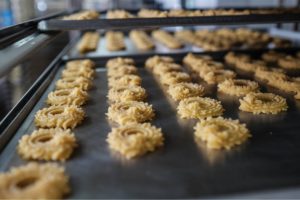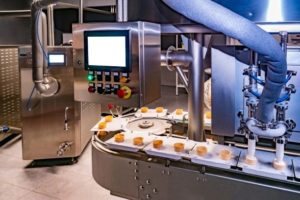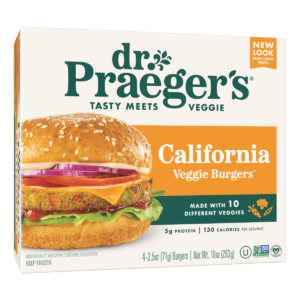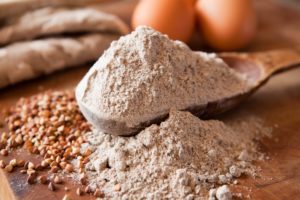Three ways food manufacturers can increase profits today
Formula manufacturers can increase profits today
Three ways you can increase profits
One of the most overlooked sources of profit in a formula manufacturing organization is in the existing business processes. Much attention is spent on gaining new sales or adding new products and little energy is focused on existing business.
While adding new sales is an important element to the life and success of any company, immediate profits can be found in your existing product mix and with your existing customers.
We will explore 3 things you can do today to ensure your organization is getting the most out of the operations of the
existing business without changing much of what you are doing today.
• Reduce inventory shrinkage
• Reduce formula loss
• Follow up on sample opportunities

1. Reduce Inventory Shrinkage
Is this an issue for you?
Go to your system (manual or computerized) and look up the quantity on hand of 10 raw materials. Then go count the inventory on hand. Of those items how many times was your system equal to your physical count? Were 8 correct? How about 7? Surely it is better than 6. If 9 items do not agree by more than 5% - you have a problem.
How often are you performing a physical inventory? Is it more than once per year? Do you have to count all of your inventory or just certain items? If you are counting all inventory more than once a year for reasons other than a financial audit—you have a problem. If you are counting all inventory more than once a year for reasons other than a financial audit—you have a problem.
Why should I care?
For most formula manufacturers the highest cost of operations is raw materials consumed to produce finished goods. We typically keep our inventory levels low to reduce the use of our
operating capital. This way we have more flexibility to manufacture multiple products. Therefore—because we keep low levels of raw materials and inventory is critical to our business—stockouts can cost us significant profits in lost sales or customer goodwill.
You would be amazed to know that many formula manufacturers are attempting to run their business with 75% or less inventory accuracy. This means that 75% of their items in their systems do not accurately reflect what is on the floor.
How can you possibly schedule production with such inaccurate information? How do you know which products are making you money? Don’t you have better things to do than to count inventory that you know is going to get out of sync in no time?
How to fix this problem?
Identify items with the most variance
Review the results of your last physical inventory. Rank the items that experienced the highest level of variance (quantity adjustment* cost).
Focus your attention on those items that have the highest variance
You will get the most bang for your buck if you fix those items first. Addressing the issue in a high volume but low cost item or a low volume and high cost item will have little impact on profits today. Add a policy to mark all existing inventory and inbound receipts of these items with a red dot so all
in your company knows this item has experienced problems in the past.
Identify ways to better track items on list
Review the ways that you currently record receipt and usage of these items. You should look for ways to increase the likelihood that you get good counts for these items.
Focus on the following activities:
• Inbound materials from Suppliers – Work with suppliers to receive inventory in usable quantities
• Usage of materials on batch tickets – Add processes to double count these items when added to production
• Return of excess materials to stock after production – Avoid movement of these items if possible. If inventory must be returned to stock add procedures to ensure the open container is the first to be used in the next production.
• Recording disposal of obsolete/expired inventory – Add procedures to ensure disposal of material is recorded in your system.
Cycle count these items on a monthly basis Record the variance each month. When you get 3 months of minimal variance remove this item from the list and proceed to the next highest item on your list.
In the longer term it is probable that you will want to automate much of this task with a computer system written specifically for the formula manufacturing industry. Vicinity Software (along with other applications) utilizes multiple units of measure to assist your organization in this task. Additionally, a few applications provide tools to address recording broken container quantities (smaller than a drum) to increase the level of precision in recording raw material usage.
In general, your organization will need to get inventory accuracy in the 90% range before it has addressed this issue entirely. While the formula industry is known for inventory variations there is no reason any organization should not be achieving very high levels of accuracy.
75% is the general level of accurate inventory levels reflected in business systems for many formula-based manufacturers.

2. Reduce Formula Loss
Is this an issue for you?
Most formula manufacturing companies create formulas in R&D and then work with production to scale the formula to production volumes. Once the formula has been run in production for a few months a theoretical production yield is established. After that time little attention is placed on the actual yield of the formula.
What processes do you have in place to review actual formula yield? Do you look at the formulas with the highest or lowest yields? Do you compare the actual yields vs. theoretical yields? If you calculate production yield at the end of a month and do not look at yields by formula – you have a problem.
Why should I care?
Formula manufacturers live and die by yields. If the yields vary significantly from standard there are a number of areas affected. If a formula requires more material than expected to get the same finished goods you may experience raw material shortages, delayed shipments of finished goods, increase
in expedited orders through production or increases in QC additions to bring a product within specification. Each of these effects erodes profits. Additionally if the actual formula yield is not in line with theoretical yields then it is probable that you are not experiencing the margins you were expecting.
If you experience higher than average losses for a formula, you are missing opportunities for additional profits.
How to fix this problem?
Identify loss by formula for previous 3 months
Measure yield by comparing input vs. total output (including finished goods and intermediates) for the previous 3 months. Make sure to only include batches that are closed and no future production is expected.
Target items that have highest loss
List formulas in order of highest loss value (loss % * avg selling price or cost * production volume). These items will yield the greatest results of change. Focusing on items with a low loss, low cost or low volume will not yield results as high as items with high loss, high cost and high volume.
Identify causes of loss
Most unexpected loss occurs in a change in raw material specifications, change in operator procedures or change in equipment performance. Depending on the facility the human element is the one that has the highest degree of error – focus on what the material handler is having to do when
making this formula. Inquire if procedures have been changed or if any of the material packaging or handling instructions have changed. Involve the R&D lab to calculate theoretical yields based on currently available raw materials.
Implement policies to track these formulas and note exceptions
Mark the formula in such a way that for 3 months you can review the loss for each batch. Make this a part of the final QC/packaging process. Isolate any batches that have high losses and investigate the causes immediately.
Software written specifically for the formula manufacturing industry can address these issues without customization. It is commonplace to review formula yield by batch and to aggregate the results by period – such as a month. Vicinity is one such application. The user can immediately see if batch
results are below those of prescribed standards. These results can also be noted for further evaluation over time.

3. Follow up on Sample Opportunities
Is this an issue for you?
Most formula manufactures provide samples to new or existing customers. Very few actually have a mechanism to track these samples and follow up on the results. Does your organization ship samples? What is the process to ensure the samples are actually driving sales? If you are not able to quote your sample/sales ratio – you have a problem.
Why should I care?
While samples may seem to be a minor issue in your organization take a minute to track the steps involved in sending a sample. You will find that the process from taking the sample request to fulfilling the order is much more complicated than just filling a typical order. Why? Because all
your systems are built around shipping an order size – not a sample size. Samples are seen as a bi-product of your normal process. Therefore systems are not in place to address the small quantities and unique handling requirements for that sample.
Take an hour and follow a sample through the process in your company. See what manual steps your employees are taking to address this sample request. Now multiply that by the number of samples you process in a year. This is a significant issue for any company that sends samples. You will most likely find
that most companies will send a sample, but very few actually follow up on the results of the sample. Very few companies record samples shipped in a system or format that sales people can track and that management can audit.
To prove that to yourself randomly pick 5 samples shipped 3 months ago. Can you track if those samples led to a sale? Did we follow up on those samples? If they did not turn into sales, why didn’t they?
The issue here is not in cost of samples but rather the incremental cost of labor to fulfill the sample without proper follow-through. Each sample shipped is a potential sale, not just for this month but for years to come.
How to fix this problem?
Identify closure rate of samples
Review 3 months of samples sent 6 months ago. How many have actually resulted in sales? Can you really tell?
Target formula/product types that have resulted in higher closure rates
Identify what makes these different than other products – type customer, salesperson, nature of product.
Work with Sales and R&D
Develop a plan to track and follow up on samples sent to new or existing customers.
Implement CRM
If a CRM system is not in place to track samples then you should consider it. The addition of one significant customer could pay for the entire effort.
Microsoft CRM matched with Vicinity is a great way to track sample opportunities and increase your closure rates. As CRM applications have become much more affordable and Microsoft has opened the gates to integration with vertical applications a longer term solution is within your reach and is
affordable to virtually every company.
Contact our Team
Vicinity Software can help you increase your profits
vicinityfood.com
770.421.2467
Complex Formulas. Simple Solutions.
Want to read more:
5 reasons why chemical manufacturing ERP software is a good investment




